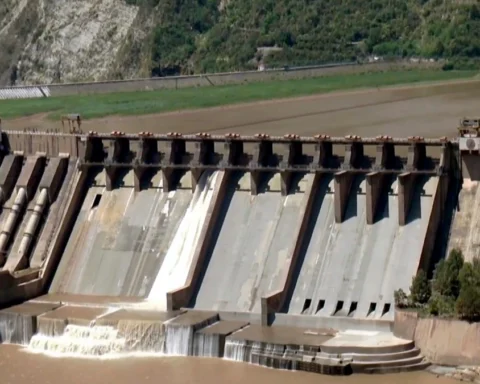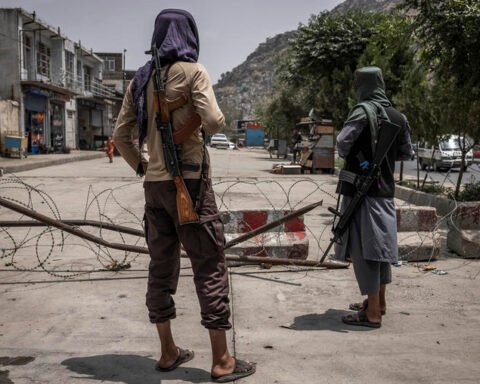Pakistan, Uzbekistan, and Afghanistan Forge Historic Path to Regional Connectivity
Another project that will create an important connection in the Eurasian region is the Uzbekistan-Afghanistan-Pakistan (UAP) Railway Project which is scheduled to open a direct land corridor between Central Asia and the Arabian Sea. This project commonly known as the Trans-Afghan Railway will alter trade patterns and geo-political alliances in a wide and historically important landmass. The centuries of trading routes are behind it with the slight shadow of ancient Silk Road, but with modern infrastructure and modern geopolitical implications. It is noteworthy that the framework agreement regarding the joint feasibility study was officially signed in Kabul on July 17, 2025, as this development was the result of years of talk and previous efforts. The agreement highlights a new deal for the three countries to promote regional integration, trade and economic ties.
The main goal of the UAP Railway is connecting landlocked Uzbekistan to the warm water ports in Karachi and Gwadar of Pakistan in the Arabian Sea via Afghanistan. This linked connection is intended to grant the Central Asian states and especially Uzbekistan an access to the global maritime trade systems unprecedented to date. The proposed route runs in a general east-west direction from Termes, Uzbekistan to Mizar-e-Sharif and Logar, Afghanistan and Kharlachi, Pakistan. Although the length, according to the different accounts, is slightly different, the new Afghan segment is estimated at about 573 km (and the total corridor length is estimated between 640 km and 850 km). It is estimated that the project will begin to be built in 2025 and will be ready to operate between 2027 and 2030. The project has been estimated to cost a lot of money to the tune of $4.8 billion to $6.9 billion with some estimates stating that the figure may go up to a whopping $8.2 billion. It is expected to transport freight of up to 20 million tons a year upon being operational, which increases the trade capacity in the region to considerable extent.
Threefold benefit to the region by Enabling Economic Growth
The UAP Railway holds a lot of economic dividends to the three participating nations that will completely transform trade patterns in their regions and create prosperity in the region.
Gateway of the Sea, Central Asia of Uzbekistan
In the case of landlocked states in Central Asia, such as Uzbekistan, the UAP railway is conceived of as a lifeline to maritime trade in the world. It has direct access to Pakistani seaports which bypasses the use of traditional and sometimes costs more and longer routes of crossing Russia or Iran. The direct access is estimated to cut transport costs at least by 40 percent and drop cargo delivery times to five days between Uzbekistan and Pakistan, a time that could be reduced to 35 days to only 3 to 5 days. Such efficiencies are essential in the increase in the competitiveness of the exporters of the region of central Asia and in imports as the trade becomes more rapid and less expensive. Another factor that points to the critical value of the UAP project is that the focusing of the current strategic plans of Uzbekistan on the diversification of export routes and specifically on the crisis in the Iran and Israel region that puts southern routes at risk is another key factor that explains why the UAP project is a crucial period.
The efficiency concept included in the promise of a 40 percent of the cost cut and five days saving time is not just about efficiency; it entails the levels of strategic economic resilience in Central Asian countries. These countries especially Uzbekistan have over the years been so dependent on trade routes through Russia. This reliance made the economy vulnerable to every geopolitical shock, including sanctions or even a war like in Ukraine. The railroad is one of the keyways through which the UAP can ensure that it does not rely solely on one major transit partner to achieve economic independence. Moreover, improved logistics will reduce the cost of the Central Asian goods, thus making them competitive in the international markets and leading to export-oriented growth other than form the raw materials, and which may even lead to industrialization and economic diversification. Furthermore, the provision of access to global markets at stable tariffs will enhance foreign direct investment in the region, a fact that will promote faster economic growth. The UAP railway is therefore not only the new trade route but also a strategic economic instrument to make Central Asia more self-dependent and stable in a global environment filled with instabilities.
There is a resurgence of Afghanistan as a transit hub
To Afghanistan, the railway is a bright light of hope in terms of economics as it turns the country, which was once a battlefield to a major transit nation. Such transition is projected to yield a lot of transit revenues, stimulate the national economy and offer vital funding towards infrastructural development. The project is also estimated to accommodate up to 20 million tons of cargo per annum side by side with generating thousands of both direct and indirect jobs in transport, logistics among other sectors contributing to alleviating the country of unemployment and better livelihoods.
Besides the direct economic prospects, the development of the railway will give the Taliban government a chance to acquire some economic significance, which can be used to potentially find some formal recognition, after ending its current international isolation. This low-economic core-foreign policy is strategic on the part of the Taliban. This will result in Kabul being economically indispensable to regional trade, which will allow it to make the neighboring nations, and foreign investors engage in a way that will lead to political acceptance. Equally, the revenue generating nature of the project can stabilize a post-conflict economy which can mean that there would be less internal unrest and Taliban ability to administrate itself can be increased. This has a direct relationship between economic development to security and governance.
A Careful or Rather Jaunty Prognosis as to a Future of Unity
The Uzbekistan-Afghanistan-Pakistan (UAP) Railway Project is one of possible examples of how infrastructure may influence the development of the region, innovation levels, and improve the involvement of countries of Central and South Asia in global connectivity. It holds the promise to open new accesses, on a never-before-seen scale, to international markets in this region of landlocked states, boost the economy of Afghanistan with transit fees and employment and consolidate Pakistan as a major trade centre in the region. More than just the economic value, the railway project is a geopolitical one aimed at promoting stability and a constructive approach to cooperation in the region as a means of overcoming the roots of mistrust and the complicated relationships between the sides. Its compatibility with wider Eurasian connectivity projects such as BRI and CPEC goes to show how it could integrate the region with the rest of the world in supply chains.
Disclaimer: The views and opinions expressed in this article are exclusively those of the author and do not reflect the official stance, policies, or perspectives of the Platform.







